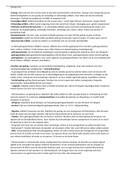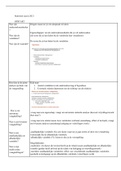Resume
Summary - sustainability economics
- Cours
- Sustainability economics
- Établissement
- Vrije Universiteit Brussel (VUB)
This summary contains all information of the courses Sustainability Economics, given by Cathy Macharis, based on the slides. It furthermore contains all guest lectures and Work colleges of 2024.
[Montrer plus]












